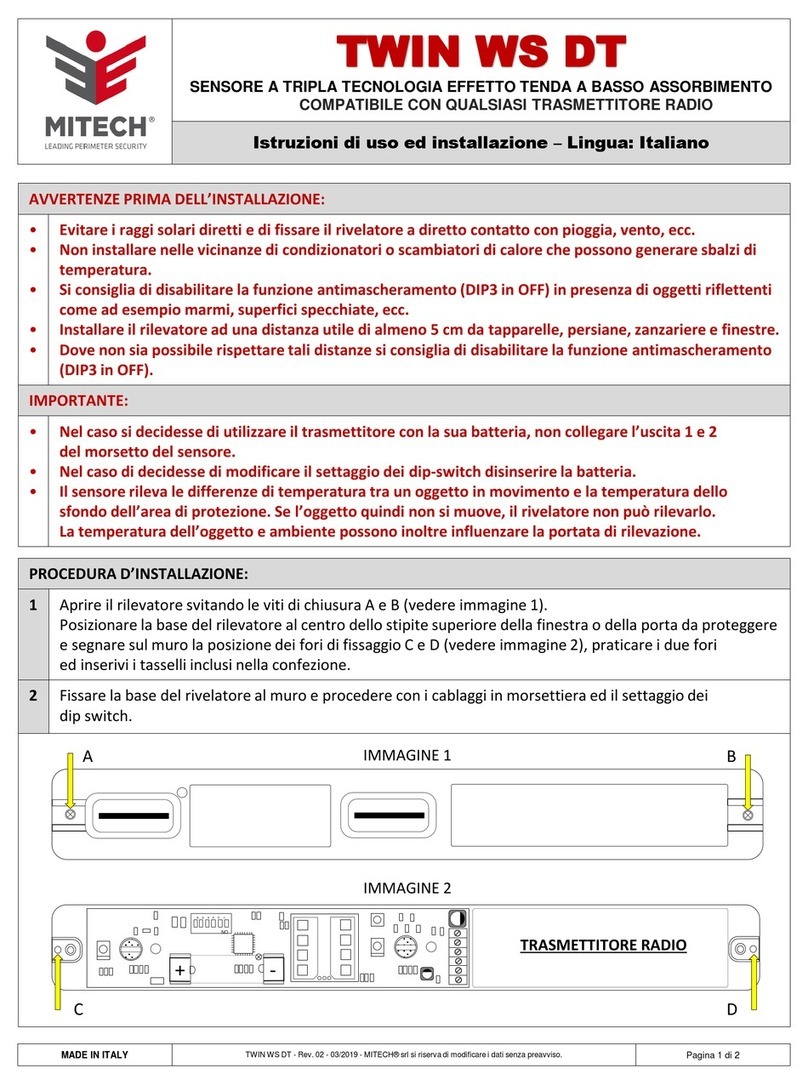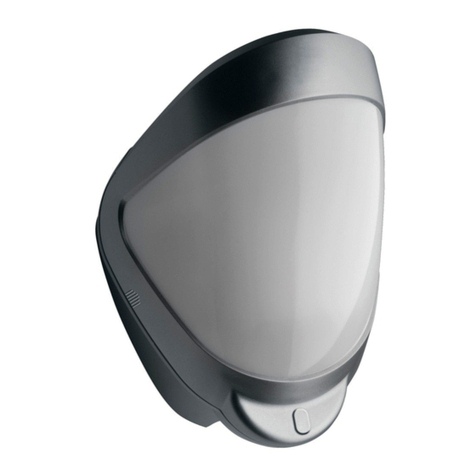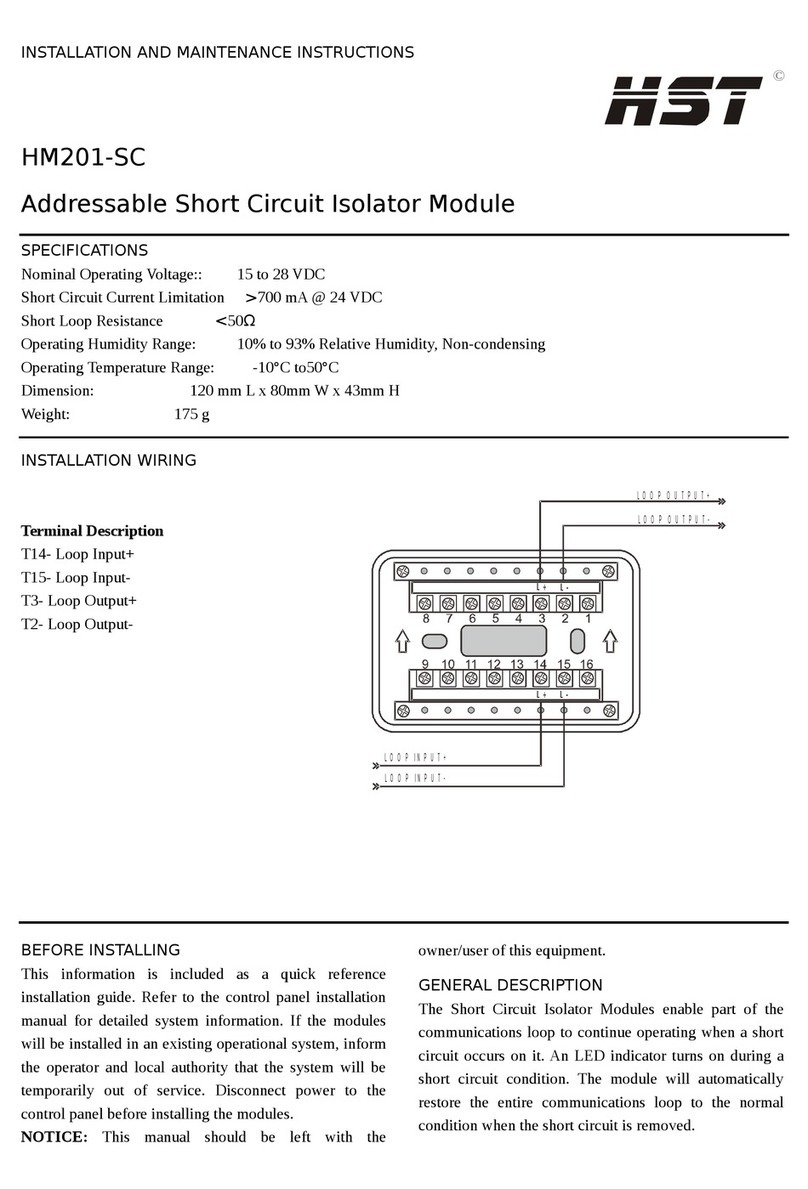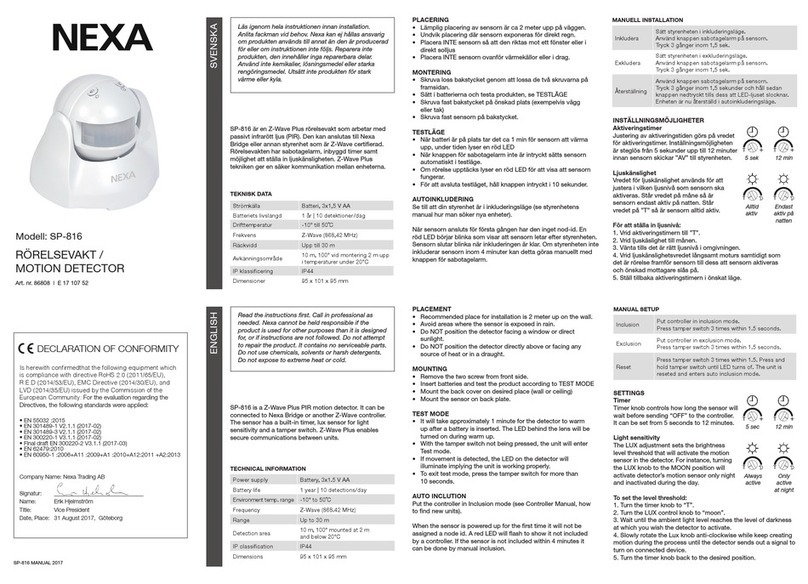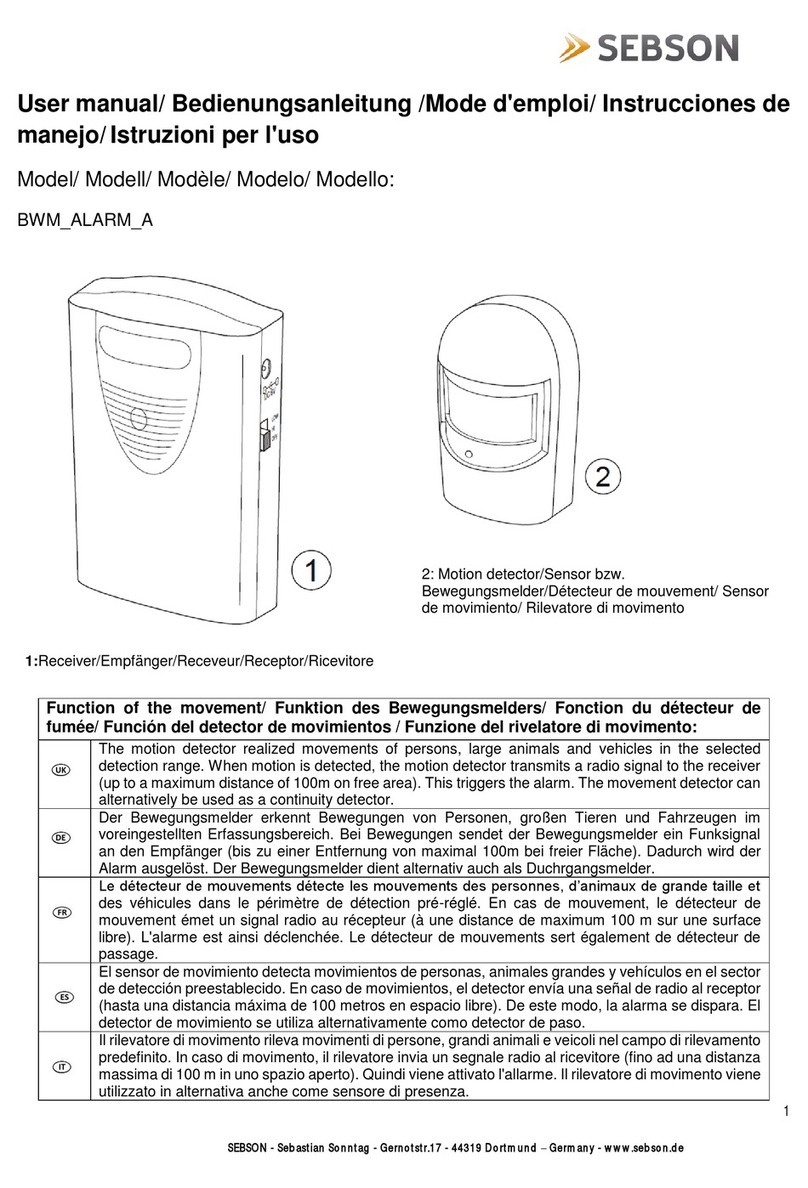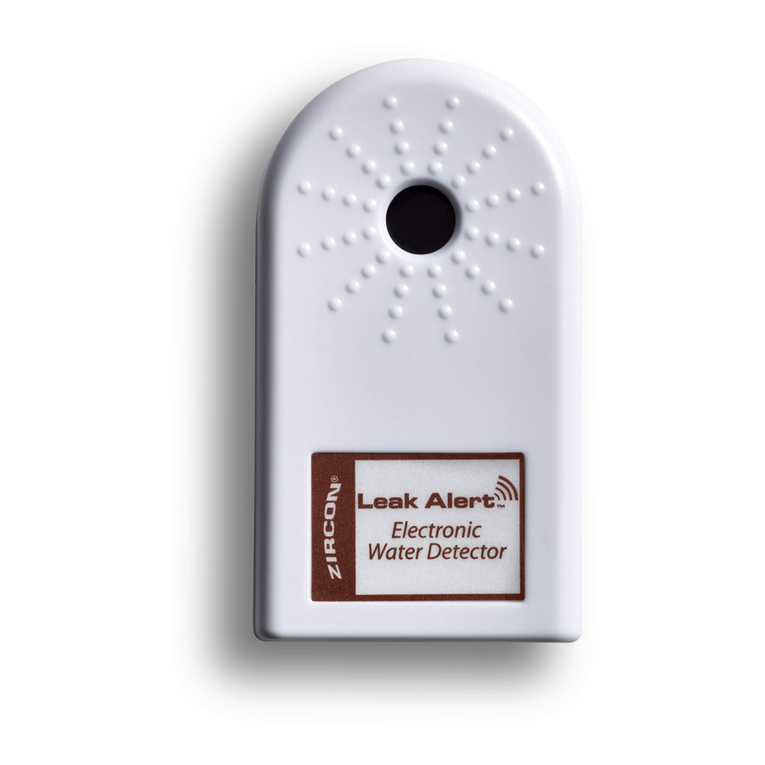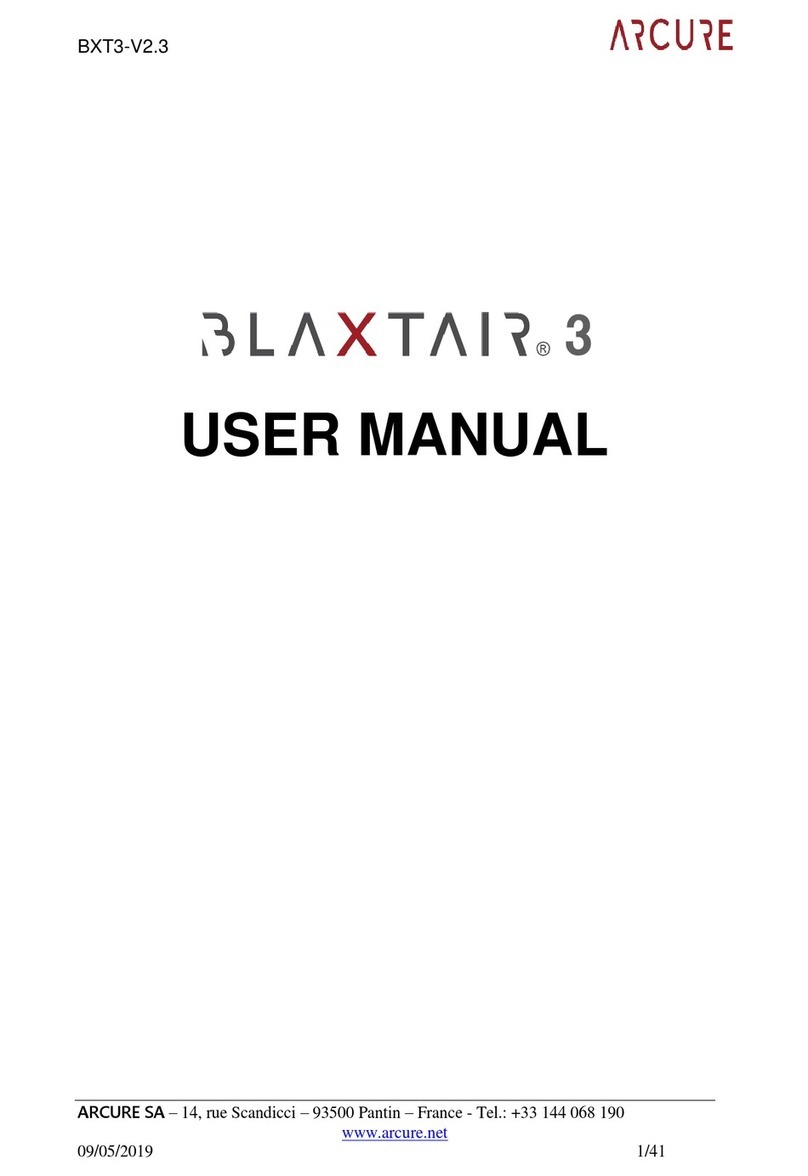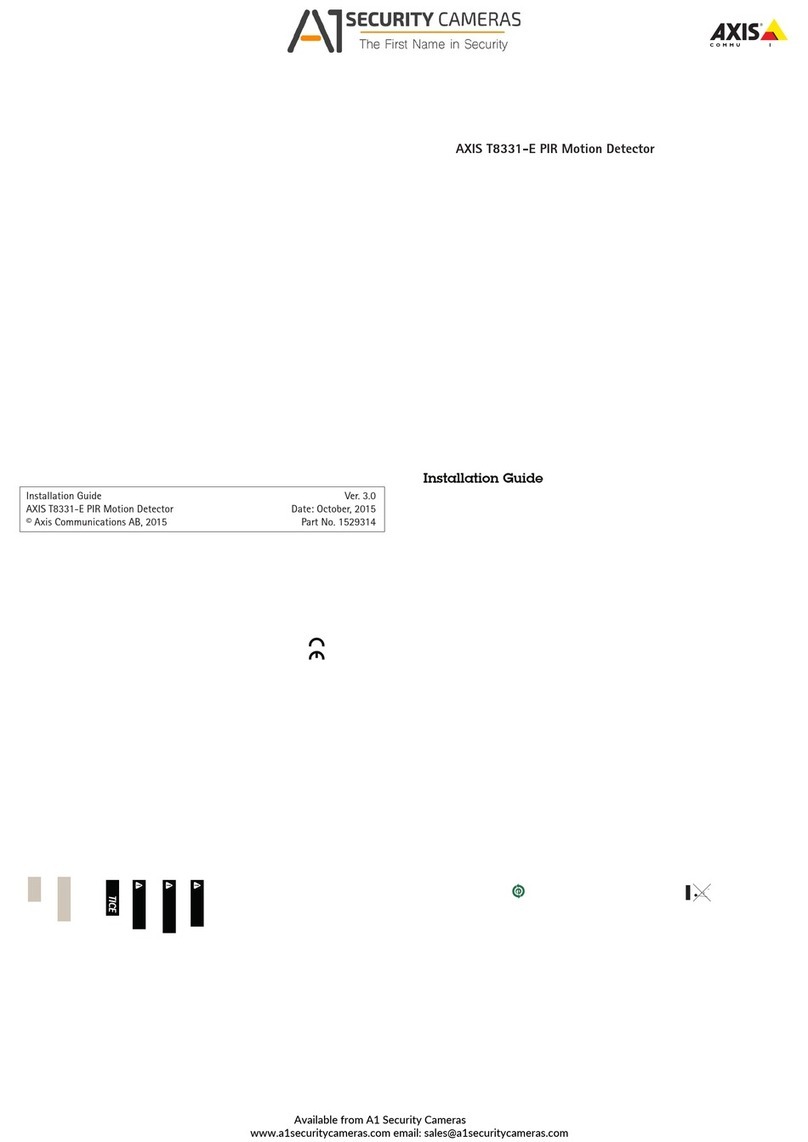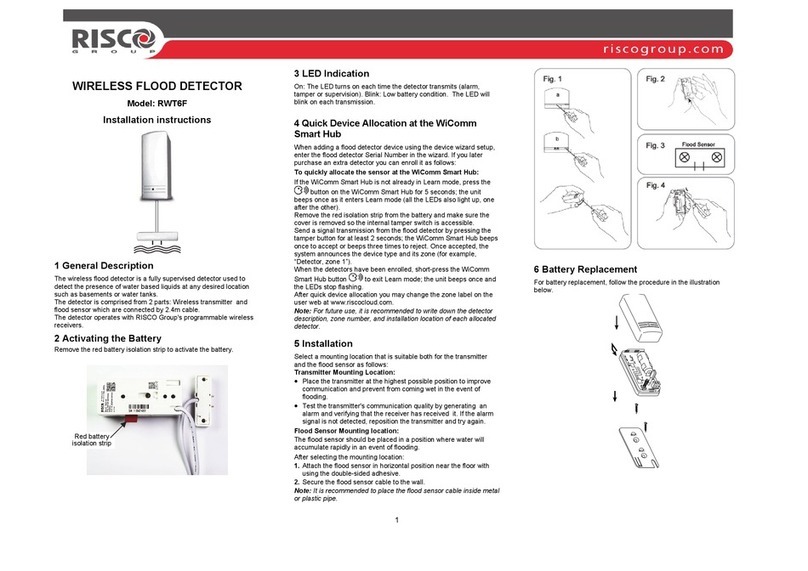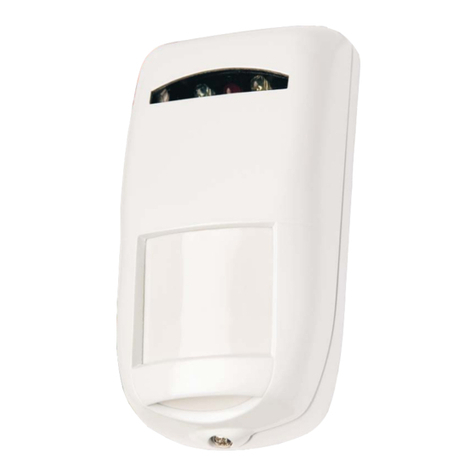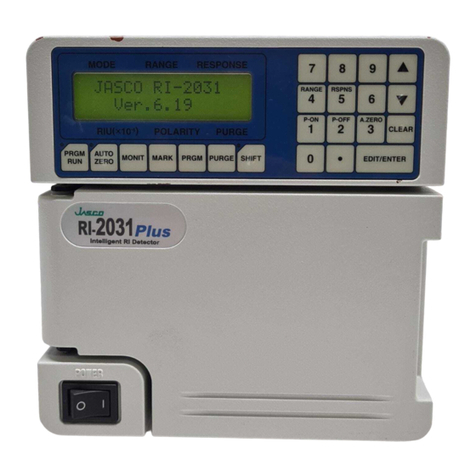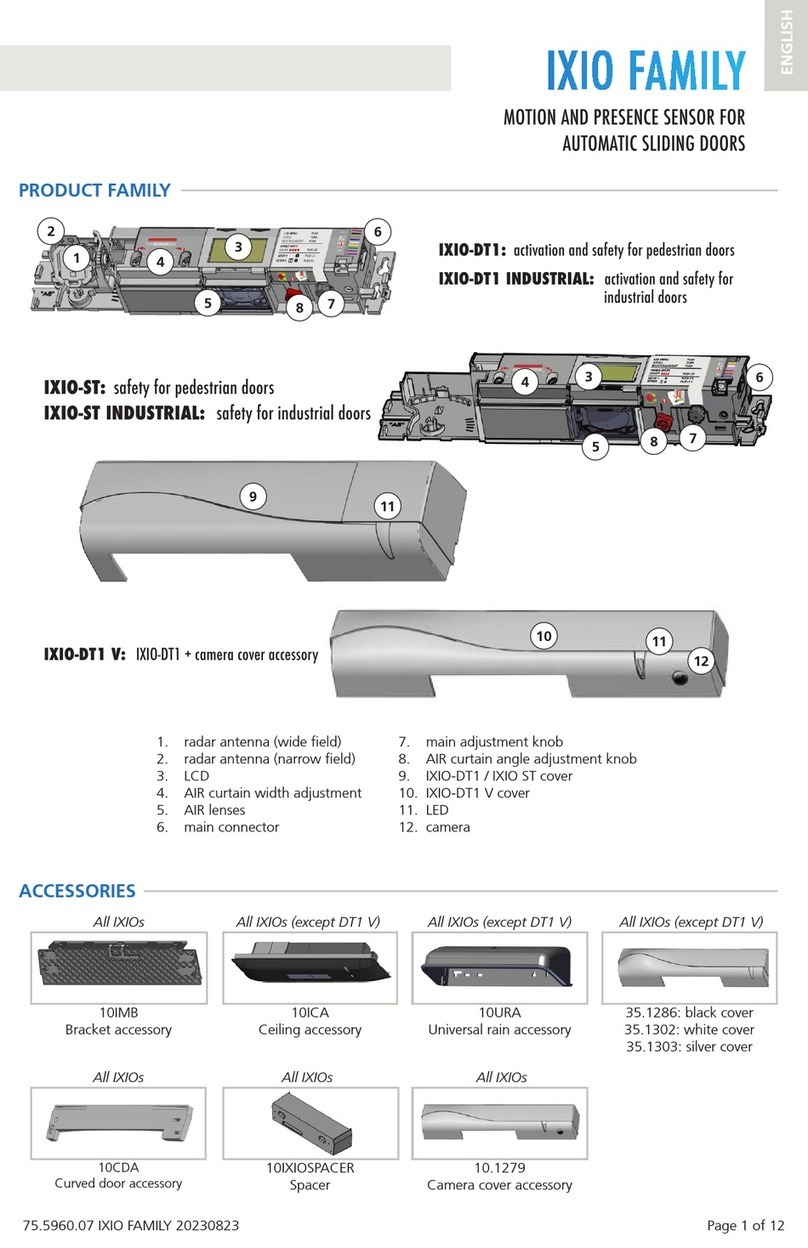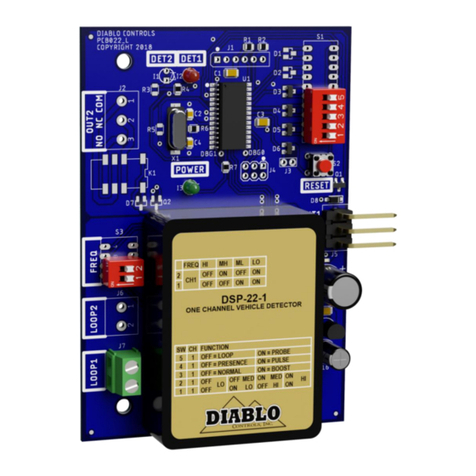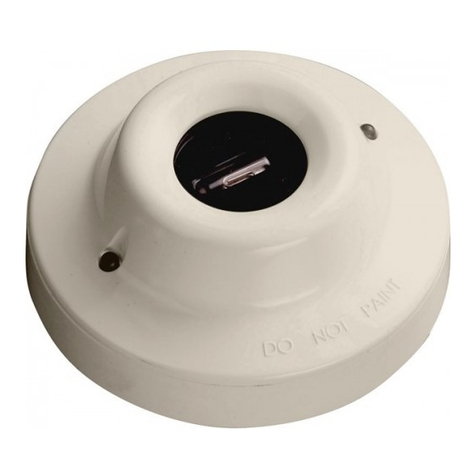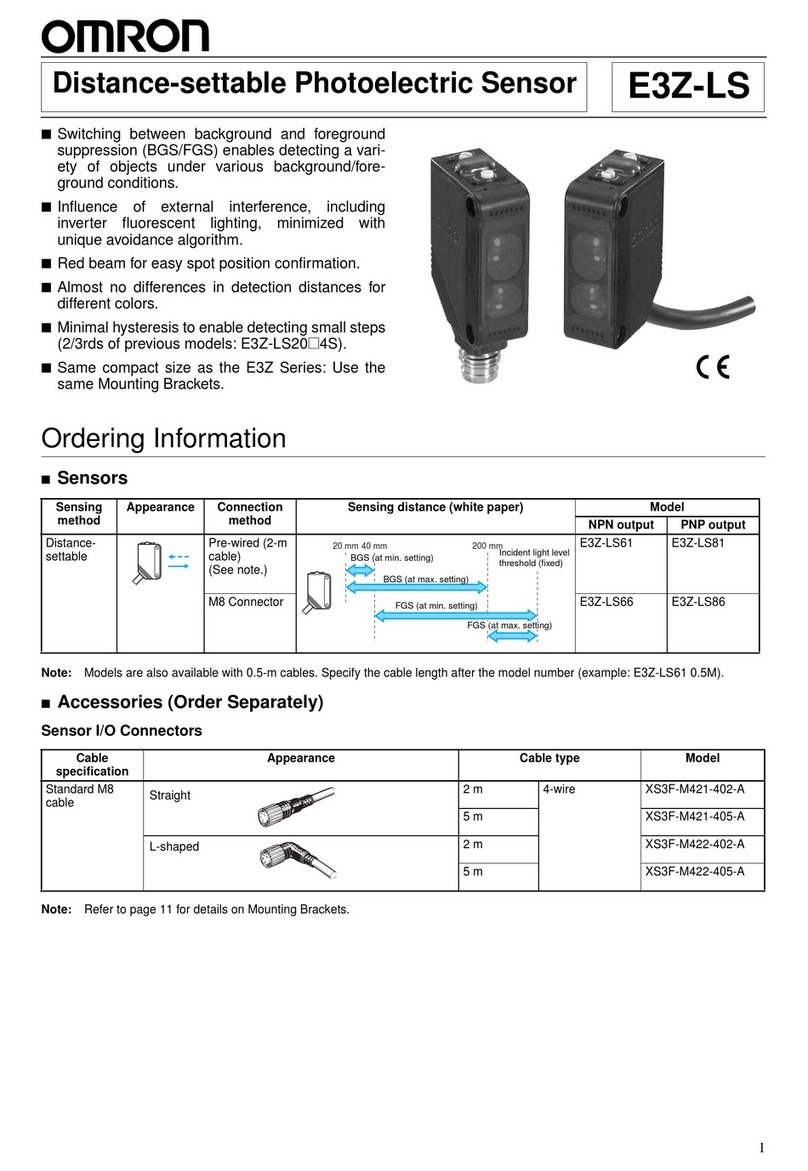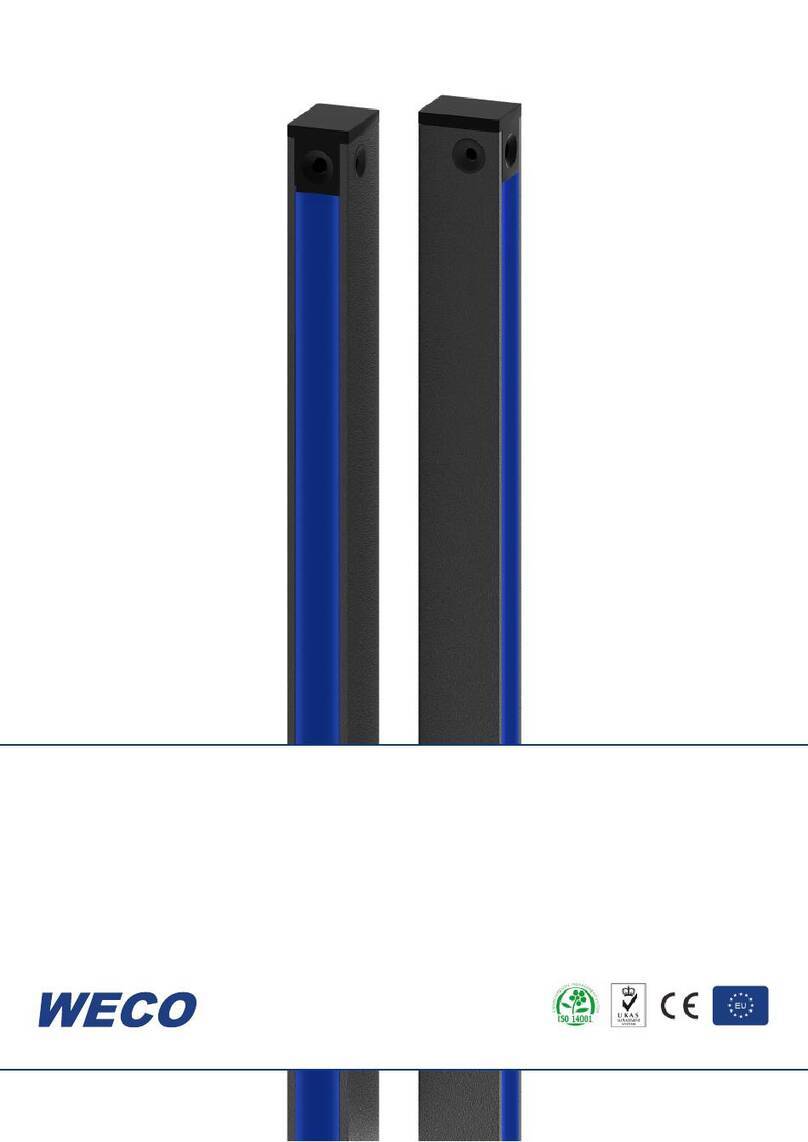Grace Industries 950-ASH Installation guide

MODEL 950-ASH
Arson Scanner Hydrocarbons
and Accelerants Detector
OPERATION AND MAINTENANCE

2
16. Low Battery Indicator
10. Hydrocarbon/Accelerant
Detection Indicators
9. Meter Backlight
17. Charging Indicator
1. Sensor and LED Arrays
4. Telescoping
Sensor Probe
2. Sensor Guard
20. Purge Indicator
5. Locking Clips
12. Mute Indicator
13. Mute Switch
23. Rubber Grip
8. Analog Meter
Display
6. Quick Start Guide
11. Power Indicator
3. Coiled Extension Cord
MODEL 950-ASH FEATURES
18. Light / UV Indicator
14. High/Low
Range Switch
19. Light / UV Switch
21. Purge Switch
15. Power On/Off and
Detection Range Control
22. USB Charging Jack
7. Audio
Sound Port

3
1. Sensor and LED Arrays: Sensor detects the
presence of hydrocarbon or accelerant vapor.
Sensor is replaceable. White and UV LED arrays
encircle the Sensor.
2. Sensor Guard: Provides a protective enclosure for
the Sensor and LED arrays.
3. Coiled Extension Cord: Allows Telescoping Sensor
Probe to be extended.
4. Telescoping Sensor Probe: Extends for ease of
investigation. Retracted: 19.5”, Fully extended: 45”.
5. Locking Clips: Lock the Telescoping Sensor Probe at
desired length. Open both clips to extend or shorten.
6. Quick Start Guide: Allows user to operate Model
950-ASH with minimal instruction.
7. Audio Sound Port: Produces audible tones when
hydrocarbons or accelerants are detected.
8. Analog Meter Display: Indicates possible presence of
hydrocarbons or accelerants. The degree and speed of
needle deection is determined by the concentration
and type of hydrocarbon/accelerant detected.
9. Meter Backlight: Illuminates the meter display in
low visibility conditions.
10. Hydrocarbon/Accelerant Detection Indicators:
When hydrocarbons or accelerants are detected,
the analog meter display ashes red. The higher the
concentration, the faster the ash rate becomes.
11. Power Indicator: Blue LED ashes until the Sen-
sor has achieved operating temperature. When
operating temperature has been reached, the blue
LED will glow.
12. Mute Indicator: LED glows red when Mute is on.
13. Mute Switch: Silences audio.
14. High/Low Range Switch: HIGH Range allows the
detection of trace levels of hydrocarbons and ac-
celerants. This is the instrument’s most sensitive de-
tection mode. LOW Range is used when an area of
concern has high concentrations of hydrocarbons.
In LOW Range, the sensitivity is reduced to assist in
pinpointing hydrocarbon / accelerant source.
15. Power On/O and Detection Range Control: Turns
Model 950-ASH on or o and adjusts Analog Meter
to be responsive to the presence of hydrocarbons
or accelerants.
16. Low Battery Indicator: Red LED glows when
battery is low or has been depleted. Model 950-
ASH with low battery has less than 60 minutes of
operating time remaining and should be taken out
of service and recharged immediately.
17. Charging Indicator: Glows red when Model 950-ASH
is charging. Glows green when charging is complete.
18. Light / UV Indicator: Glows blue when ultraviolet LED
array is on. Glows red when white LED array is on.
19. Light / UV Switch: Activates the ultraviolet or white
LED array and meter backlight.
20. Purge Indicator: Flashes red while the Purge func-
tion is active. Glows red when Purge is complete.
21. Purge Switch: Turns Purge function on or o. Purg-
ing clears the Sensor of any absorbed contaminants.
22. USB Charging Jack: Remove the protective cap and
plug into a USB charger.
23. Rubber Grip for ease of handling and operation.
SPECIFICATIONS
Dimensions: 3-1/4”wide by 3-1/4”deep by 19-1/2”long.
Length fully extended: 45”.
Weight: 2.2 lbs (1kg).
Enclosure: Corrosion resistant, powder coated steel.
Battery: rechargeable Lithium-ion.
Battery Run Time: up to 7-8 hours of continuous
operation.
Battery Charging: +5V USB adapter powered from
120VAC wall plug charger.
Battery Charging Time: approximately 24 hours to fully
charge from Low Battery Indication.
Sensor: Solid State Metal Oxide Semiconductor.
White LED: 8 solid state white LEDs arrayed around Sensor.
Ultraviolet (UV) LED: 8 long-wave ultraviolet (395nm)
LEDs arrayed around Sensor.
MODEL 950-ASH FEATURES

4
Arson Scanner Hydrocarbons
and Accelerant Detector
MODEL 950-ASH
The Model 950-ASH Arson Scanner Hydrocarbon and
Accelerant Detector is a precision instrument designed
specically for detecting trace levels of hydrocarbons
and accelerants.
Model 950-ASH is optimized for detecting hydrocar-
bons or accelerants that may be present at suspect
arson res. Model 950-ASH functions as an excellent
general purpose discovery instrument for eld survey
such as: searching landlls for methane outgassing,
detection of leaking underground storage tanks, or
simply as a general purpose gas leak detector.
Additionally, Model 950-ASH employs an array of
illuminating ultraviolet and white LEDs which further
assist the investigator in locating accelerants or other
evidence in situations where detection in low visibility
environments becomes dicult. Other benecial
features include a Mute function to silence the audible
tones for discreet investigation and a Purge feature for
rapid Sensor recovery.
PRINCIPLE of OPERATION
Model 950-ASH Sensor is a solid-state semiconductor
type whose resistance changes in the presence of
hydrocarbon or accelerant vapors. This change in
resistance is sensed by the signal processing electron-
ics and is displayed as an audio and visual rate signal
that is proportional to the relative concentrations of
hydrocarbons/accelerants present. The Sensor is
heated while the detector is in use to provide stable,
consistent operation. The sensing element is housed in
a thimble-like structure of a double layer of very ne
stainless steel assuring complete operating safety as
well as providing mechanical protection.
OPERATION
POWER ON: Power the Model 950-ASH ON by
rotating the Power On/O Detection Range Control
clockwise until a click sound is heard. The blue Power
Indicator LED will begin to ash, indicating the 950-
ASH is in the warmup and Sensor stabilization cycle.
After approximately 90-120 seconds, the blue POWER
Indicator LED stops ashing and glows blue to indicate
the Sensor has reached operating temperature and the
instrument is ready for use. During the warmup cycle,
you may observe a deection of the needle and rapid
ashing of red LEDs on the Analog Meter Display. This
action is normal and will cease as the detector
gradually attains operating temperature. NOTE: The
Sensor may not detect the presence of hydrocarbons
or accelerants while in the warmup cycle.
The ultraviolet and white LED Arrays will function
during the warmup cycle.
SETTING the SENSITIVITY
SETTING the SENSITIVITY: After the 950-ASH has com-
pleted the warmup cycle and is in the READY mode, it is
time to set the RANGE and sensitivity. Toggle the Range
Switch to the HIGH position.
HIGH RANGE allows for the detection of trace levels of
hydrocarbons or accelerants.
Rotate the Detection Range Control clockwise until
the needle on the Analog Meter Display deects clock-
wise and the red Hydrocarbon/Accelerant Detection
LEDs begin to ash. If the Mute switch is OFF, you will
observe audio tones in synchronism with the red LEDs.
To silence the audio tones, switch the Mute control to
ON. Next, slowly rotate the Detection Range Control
slightly counter clockwise until you no longer observe
the red ashing LEDs, the audible tones cease and the
needle on the Analog Meter Display falls to the 0, 1, or
2 region of the display.
The Model 950-ASH is now ready to scan for hydrocar-
bons/accelerants.
NOTE: LOW RANGE is used when an area of concern has
high concentrations of hydrocarbons. In LOW RANGE,
the sensitivity is reduced to assist in pinpointing hydro-
carbon / accelerant source.
DETECTING HYDROCARBONS
or ACCELERANTS
To detect the presence of hydrocarbons/accelerants,
scan the suspect material or area of concern at an
angle of approximately 45° while holding the Sensor
end of the Telescoping Sensor Probe approximately
½” to 1” from the area to be surveyed. Scan very slow-
ly to provide sucient time for vapor to penetrate the
Sensor. NOTE: The time required for a hydrocarbon or
accelerant to change from liquid to vapor and diuse
into the Sensor is dependent upon environmental
factors such as temperature, humidity, wind velocity
and the type of hydrocarbon/accelerant. It is important
to take your time and be patient.
NOTE: to silence the 950-ASH for discreet investigation,
switch the Mute control to the ON position.

5
When the Sensor is exposed to a hydrocarbon or
accelerant, the Analog Meter Display needle will deect
clockwise, followed by ashing red LEDs and repeating
audio tones. This response indicates the possible
presence of hydrocarbons/accelerants. If high
concentrations of a detected hydrocarbon/accelerant
are sensed, it may be necessary to clear the Sensor
using the Purge function (see Purge instructions below)
and scan the area of concern again. Another positive
reaction indicates the presence of a suspect material.
Collect a sample of debris for analysis.
For investigations where the Sensor responds to higher
levels of hydrocarbon/accelerant vapor, the needle
on the Analog Meter may fully deect to the highest
level on the scale. Model 950-ASH can be normalized
for these conditions by rotating the Detection Range
Control counterclockwise until the ashing Detection
Indicator LEDs and audio tones just stop. Upon further
investigation, when the audio tones and Detection
Indicator LEDs begin again, you are closer to higher
concentrations of hydrocarbon/accelerant vapor and
may have the opportunity to collect a sample.
PURGE
The Purge function is used to clear the Sensor after
exposure to high levels of hydrocarbon or acceler-
ant vapor. Remove the Model 950-ASH detector from
the contaminated vicinity and set the Purge control
to the ON position. The red Purge Indicator LED will
ash. While the Purge feature is in use, audible tones
and red Analog Meter LEDs will be observed. Allow
the Purge to remain ON until the red Purge indica-
tor LED stops ashing and glows red (this may take
approximately 20 seconds). Return the Purge switch to
the OFF position and reset the sensitivity and detection
threshold.Your 950-ASH is now ready to detect another
sample.
Note: While the Purge feature is in use, the Sensor will not
detect the presence of hydrocarbons or accelerants.
Mute feature may be used during the Purge cycle to
silence the audio tones.
ULTRAVIOLET and WHITE LED ARRAYS
The LED features of your Model 950-ASH consist of
an array of eight long-wave ultraviolet (395 nm) LEDs
and an array of eight white LEDs. Each LED array is
controlled by a 3-position toggle switch located on the
Controls and Display Panel. The Ultraviolet and White
LED arrays function independently of each other and
cannot be used simultaneously.
It is desirable to use the ultraviolet LED array in as
little ambient light at the investigation scene as
possible. The ultraviolet LED array allows the
investigator to search for a uorescence or glow of
suspect material, potentially indicating the presence
of residual or trace amounts of hydrocarbons,
accelerants, or other questionable material. Hold the
ultraviolet LED array at an angle of approximately
45° and approximately ½” inch away to examine the
suspect material. During an investigation, if
uorescence of suspect debris is discovered, it should
be gathered and sent to a lab for analysis.
The white LED array feature is desirable for use as a
ashlight in dimly lit or low visibility environments.
When using this feature, a backlight will illuminate the
Analog Meter Display.
How Ultraviolet (UV) Light is Used
in Arson Investigations
UV light is used to detect information that is otherwise
invisible to the human eye and to uncover valuable
evidence that can be used to solve a re investigation.
UV light is used to identify the presence of hydrocar-
bons, accelerants, and to identify pour patterns.
UV light not only assists in identifying the presence
of accelerants but also in rapidly locating accelerant
residues and assists in locating the point of
origin of the re. The color in which accelerants glow
is aected by heat exposure. The longer an accel-
erant is exposed to heat (i.e. the origin), the more
dierentiated its uorescence color will be from
other, less exposed areas. Evidence of accelerants is
absorbed in a re and is almost always invisible to
the naked eye. However, the area contaminated by
accelerants is easily discernible under UV light.
Volatile hydrocarbons such as gasoline, kerosene,
acetone, etc. uoresce when exposed to UV light. By
using UV light, investigators can accurately identify
locations where samples should be collected for
further laboratory analysis. UV light can also be helpful
in locating fragments of incendiary devices since
explosive wrappings are frequently uorescent.
Samples collected in cans and plastic evidence bags
can be heated in warm water to form condensation.
The latent accelerant residue rises to the surface and
can be seen under UV light.
UV light has been used to identify pour patterns,
the shape of an accelerant container, and pour trails
leading back to containers. UV light will indicate

6
accelerant long after its odor is noticeable. Masking an
accelerant will not prevent its UV detection. Accelerant
on skin or clothing will uoresce as well.
Advantages of Investigating With UV Light
• UV light is not aected by environmental factors
such as temperature, humidity, and wind conditions.
• The 950-ASH Sensor responds to a general area
of saturation and the UV light aids in pinpointing
specic areas.
• UV lights have been proven to eectively uoresce
samples up to two months after an incident.
• After a lengthy, hot re, the odors of hydrocarbons/
accelerants have usually disappeared.
RECOMMENDED
INVESTIGATION TECHNIQUES
When attempting to detect trace amounts of hydrocar-
bons or accelerants, hold the Sensor approximately ½”
to 1” away from the suspect material and scan the area
very slowly. For ease of investigation, adjust the
Telescoping Sensor Probe length by unlocking the Clips,
extending to the desired length and then closing the
Locking Clips.
45”
Fully
Extended
19.5”
Collapsed
It is important to scan the area very slowly because a
hydrocarbon or accelerant must vaporize before it can
be detected by the Sensor. The time required for hydro-
carbons/accelerants to vaporize and become airborne
particles may vary from one investigation to another.
Environmental factors such as temperature, humidity,
wind velocity, and type of hydrocarbon/accelerant all
aect the instrument’s ability to detect.
Be patient and observant when using the instrument.
Keep in mind good investigative practices. Survey the
area thoroughly and imagine where you would take a
sample if you did not have the 950-ASH. Take your time.
Check the top layer of debris rst before digging to
obtain suspect material. Positive samples may be ob-
tained from a suspect area many hours or even days
after a re has occurred.
STORAGE and MAINTENANCE
At the end of each use, clean with a soft cloth.
DO NOT use cleaning solvents.
After each use, inspect the instrument for signs of
physical damage. Remove from service if physical
damage is observed.
To prevent damage between use, collapse the
Telescoping Sensor Probe to it’s shortest length, lock
the clips and store the 950-ASH, wall charger, and mini-
USB cable in the protective case provided.
Store in a dry, well ventilated area. Recommended stor-
age conditions are: 50° to 77°F (10° to 25°C) at no more
than 65% relative humidity. Do not leave your 950-ASH
exposed to elevated temperatures such as those that
occur inside a vehicle during summer months.
The Sensor may be removed for cleaning or
replacement by gently pulling it from the Sensor
Socket. Cleaning is usually not required, however, if
the Sensor should become contaminated with ashes
or other debris, carefully loosen and unplug it from the
Sensor Socket. Gently tap it over a white piece of paper
and observe if any material is dislodged. Plug the Sen-
sor back into the socket by carefully aligning the pins
and gently pressing the Sensor into place.
If the Sensor should accidentally become submerged in
liquid, remove it from the Sensor Socket and allow the
Sensor to dry for 24 hours. Permanent damage to the
Sensor is likely to occur if submerged in any liquid.
Replacement may be necessary. Sensors are available
for purchase from Grace Industries, Inc.
CHARGING
Model 950-ASH has a mini-USB Charging Jack at the
bottom of the main housing. The battery can be
charged using the mini-USB cable and wall plug charger
provided with the instrument. A computer USB port

7
may also be used to charge the battery.
The Charging Indicator will glow red while the
Model 950-ASH is charging. Battery is fully charged
when the Charging Indicator glows green.
Complete charge time is up to 24 hours.
NOTE: charging via computer USB port may take longer.
USB Charging Wall Plug Power Cube and Mini-USB Cord
TROUBLESHOOTING
●When turned ON, the needle on the Analog Meter
fully deects:
The Sensor may be contaminated or the atmosphere
may be contaminated. The 950-ASH is an extremely
sensitive instrument and care must be taken to
ensure no hydrocarbon or accelerant residue
remains in or located near the Sensor.
• When initially turning the detector ON, be sure
Detection Range Control is rotated completely
counterclockwise without turning OFF.
• Allow unit to warmup. The Power Indicator will
glow steady Blue when ready.
• Turn the Purge feature ON to clear the Sensor and
allow any absorbed contaminant or residue to be
burned o.
• Allow the detector to remain ON for several
minutes in a clean, draft-free environment.
• Set the Sensitivity.
●Sensor will not respond to hydrocarbons or
accelerants:
•Some hydrocarbons and accelerants have odor
additives that can be mistaken for hydrocar-
bon or accelerant vapor. You may be noticing
this odor after all of the hydrocarbon/accelerant
vapor has completely volatilized away and only
the odorizer remains.
• The hydrocarbon or accelerant might not be
vaporizing due to many factors including
temperature and type of hydrocarbon or acceler-
ant.
• Allow sucient time for a true reading. It
may be necessary to wait several minutes for
accumulation of airborne vapor for detection.
●Inconsistent readings:
• Sensor can absorb hydrocarbons/accelerants
that may cause an erratic response. This may
be due to extended periods of storage or a
contaminated atmosphere. Move to an area
known to be free of contaminants and use the
Purge feature to clear the Sensor.
HYDROCARBON, ACCELERANTS and GASES
DETECTED by MODEL 950-ASH
Partial list of common hydrocarbons and accelerants
that can be detected by the Model 950-ASH includes,
but is not limited to:
Fuels: Kerosene • Gasoline • Diesel Fuel.
Hydrocarbons and their derivatives: Methane • Ethane
• Propane • Butane • Pentane • Hexane • Heptane •
Octane • Propylene • Benzene • Toluene • Xylene
• Ethylene Oxide. Halogenated Hydrocarbons:
Methyl Chloride • Methylene Chloride • Ethyl Chloride
• Ethylene Chloride • Ethylidene Chloride • Trichlo-
roethane • Vinylidene Chloride • Trichloroethylene •
Methyl Bromide • Vinyl Chloride. Alcohols: Methanol/
Ethanol • n-Propanol • Isopropanol • n-Butanol
• Isobutanol. Ethers: Methyl Ether • Ethyl Ether
Ketones: Acetone • Methyl Ethyl Ketone. Esters: Methyl
Acetate • Ethyl Acetate • n-Propyl Acetate • Isobutyl
Acetate. Nitrogen Compounds: Nitro Methane • Mono
Methyl Amine • Dimethylamine • Trimethylamine •
Mono Ethyl Amine • Diethyl Amine. Inorganic Gases:
Ammonia • Hydrogen • Hydrogen Cyanide.

© Grace Industries, Inc. Printed in U.S.A. P/N: Model 950-ASH 1218
305 Bend Hill Road
Fredonia, PA 16124 U.S.A.
724-962-9231
www.arsondetection.com
WARRANTY INFORMATION
Grace Industries, Inc. warrants your unit to be free from defects in workmanship and materials for a period of one
(1) year from the date of original purchase. This warranty is valid only when the returned products are accompa-
nied by a sales slip or other proof of purchase that states the date and location of purchase. Grace Industries, Inc.
will not repair or replace any merchandise under warranty which has been damaged because of accident, misuse
or abuse of the products while in possession or control of the consumer. This warranty is void if any attempt to
repair or replace parts was made or attempted by other than qualied Grace Industries Inc. personnel. This war-
ranty is void if any of the sealed compartments are opened or tampered with. Before sending product to Grace
for repair, call for Return Authorization or RA#. Please reference RA# in shipping documents for tracking purposes.
Send all repair products, prepaid and accompanied by proof of purchase to: Grace Industries, Inc., Repair Division,
305 Bend Hill Road, Fredonia, PA 16124 U.S.A. Grace Industries, Inc. shall not be liable for any direct, incidental
or other consequential loss or damage arising out of failure of the device to operate. Customer is responsible for
return shipping charges.
The sole and exclusive remedy under all guarantees or warranties, expressed or implied, is strictly limited to
repair or replacement as herein provided. All implied warranties, including but not limited to, warranties of tness
and merchantability, are hereby limited in duration to a period ending one (1) year from the date of purchase. The
warranty and liability set forth in the prior paragraphs are in lieu of all other warranties, expressed or implied, in
law or in fact, including implied warranties of merchantability and tness for a particular purpose. Some states do
not allow limitations on how long an implied warranty lasts, so the above limitations may not apply to you.
This warranty gives you specic legal rights and you may also have other rights which may vary from state to
state. Technical assistance is available by contacting Grace Industries, Inc. at 724-962-9231. Product issues may be
reported at any time to Grace Industries, Inc. at 724-962-9231.
The information contained in this booklet is believed to be accurate and reliable.
Grace Industries, Inc. provides this information as a guide only.
Table of contents
